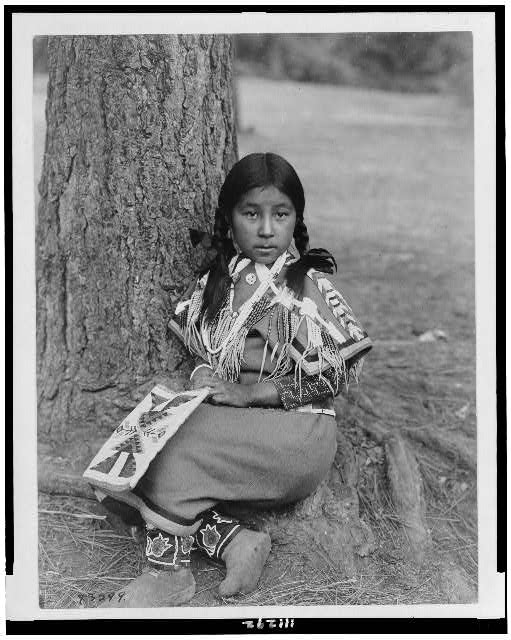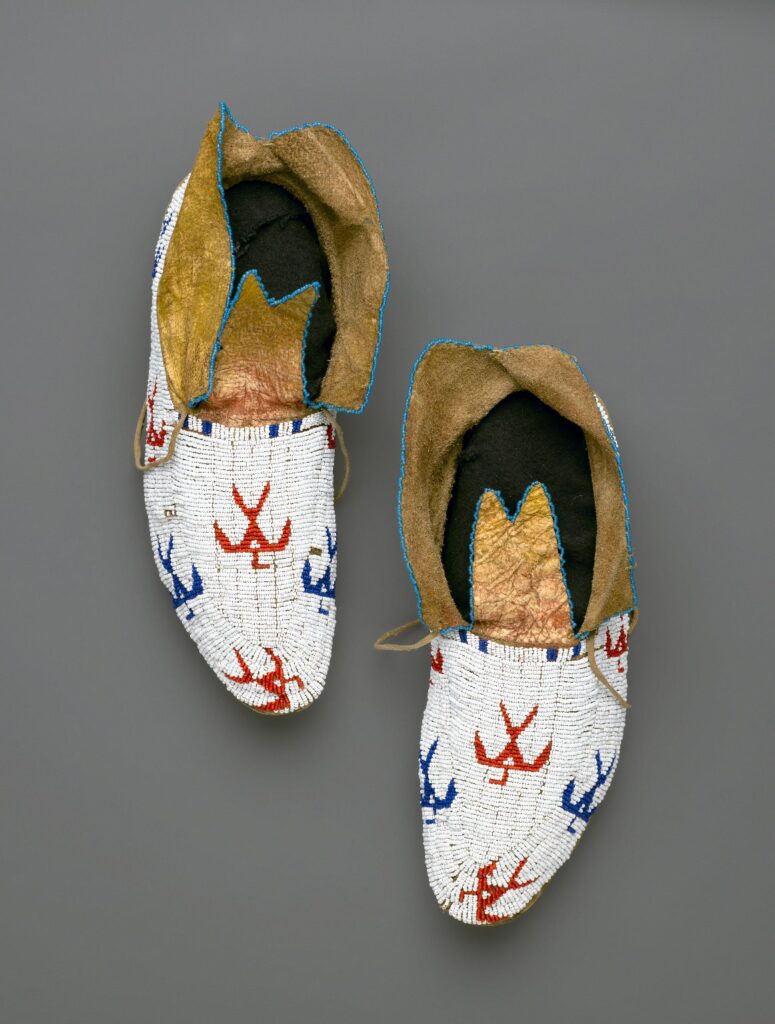Little Light Moccasin
By Mary Austin
Annotations by Rene Marzuk

Little Light Moccasin swings in her basket, Woven of willow and sinew of deer, Rocked by the breezes and nursed by the pine tree, Wonderful things are to see and to hear. Wide is the sky from the top of the mountain, Sheltered the canon from glare of the sun, Ere she is wearied of watching their changes, Little Light Moccasin finds she can run. Brown is her skin as the bark of the birches, Light are her feet as the feet of a fawn, Shy little daughter of mesa and mountain, Little Light Moccasin wakes with the dawn. All of the treasures of summer-time canons, These are the playthings the little maid knows, Berry time, blossom time, bird calls, and butterflies, Columbine trumpets, and sweet brier rose.[1] Bear meat and deer meat, with pine-nuts and acorns, Handsful of honey-comb dripping with sweet, Tubers of joint grass the meadows provide her, Bulbs of wild hyacinth, pleasant to eat.[2] When on the mesa the meadow lark stooping, Folds her brown wings on the safe hidden nest, Hearing the hoot of the owlets at twilight,[3] Little Light Moccasin goes to her rest. Counting the stars through the chinks of the wickiup, Watching the flames of the campfire leap, Hearing the songs of the wind in the pine trees, Little Light Moccasin falls fast asleep.

AUSTIN, MARY. “LITTLE LIGHT MOCCASIN.” THE SOUTHERN WORKMAN XXIX, NO. 4 (APRIL 1900): 237-38
[1] The Eastern Red Columbine is a branching perennial known for its drooping flowers which attract long-tongued insects and hummingbirds. According to the Lady Bird Johnson Wildflower Center’s website, Native American men rubbed their palms with its crushed seeds as a love charm.
[2] Wild hyacinth bulbs have a nutty flavor and can be used like potatoes. They were an important food source for Native American tribes and early European settlers.
[3] Listen to various North American owls’ calls.
Contexts
Mary Austin’s poem appeared in The Southern Workman magazine, an American journal “devoted to the interests of the black and red races of this country,” according to its cover page. The magazine included sections on education and suggestions for school lessons. The U.S. Congress had passed several Indian Appropriations Acts (in 1851, 1871, 1885, and 1889) that made Native American lands available to white settlers and confined their original inhabitants to reservations they could not leave without permission.
Definitions from Oxford English Dictionary:
- canon: An alternate spelling of cañon (together with cannon and canyon), a deep gorge or ravine at the bottom of which a river or stream flows between high and often vertical sides; a physical feature characteristic of the Rocky Mountains, Sierra Nevada, and the western plateaus of North America.
- mesa: A flat-topped hill of plateau of rock with one or more steep sides, usually rising abruptly from a surrounding plain and common in the arid and semi-arid areas of the United States.
- moccasin: A kind of soft-soled leather shoe originally worn by North American Indians.
- wickiup: A dwelling used by certain North American Indian peoples of the west and south-west consisting of a dome-shaped frame covered with brushwood.
Resources for Further Study
- The presentation “Immigration and Relocation in U.S. History,” available through the Library of Congress, describes the political standing of Native Americans during the 19th century.
- Ph.D. Elisabeth Pearson Waugaman offers background on the fluid Native American naming tradition and its connection with nature, spirituality, and personal growth.
- Sean Sherman, chef and member of the Oglala Lakota from the Pine Ridge Reservation, discusses the invisibility of Native American culinary traditions within the larger culinary landscape.
- The mini-series We Shall Remain (2009), a collaboration between Native and non-Native American filmmakers, examines significant moments from U.S. history from a Native American perspective.